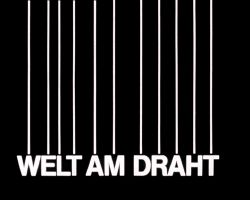GMU:Breaking the Timeline/projects/Reconstructing the truth: Difference between revisions
m (→Description) |
|||
| (2 intermediate revisions by one other user not shown) | |||
| Line 1: | Line 1: | ||
==Description== | ==Description== | ||
[[Image:Reconstructing the Truth.jpg|right|thumb|250px|Reconstructing the Truth]] | [[Image:Reconstructing the Truth.jpg|right|thumb|250px|Reconstructing the Truth]] | ||
Nowadays reality is a highly constructed body made up of many different ideas, desires and influences. The biggest reality producing machine, the media with all its different distribution channels, confronts us with a huge moving | Nowadays reality is a highly constructed body made up of many different ideas, desires and influences. The biggest reality-producing machine, the media with all its different distribution channels, confronts us with a huge colourful moving mass made up of countless pictures and sounds. The question about whether what we see is real or not is neither asked nor encouraged. The catchphrase of modernity is see it and believe it, critical discourse is never held. While in ancient times, following Plato's ideas, reality to some is the dancing of shadows on a cave wall, for us it is the interplay of many differently coloured pixels on flat surfaces. Screens are our viewfinders to the world. Our perception is created by artificial interfaces. The connection between reality and man is created by copper wires and silicon plates. A very fragile umbilical cord highly dependent on those who feed it thus holding the ultimate control. | ||
Two movies dealing about the question of what is real, [[wikipedia:The Matrix|''The Matrix'']] (1999) by the Wachowski brothers and [[wikipedia:Welt am Draht|''World on Wires'']] (1973, orig. title ''Welt am Draht'') by Rainer Werner Fassbinder, are left to the electronic brain of a computer to create, with its countless circuits instructed by a programmer, a reality partly constructed partly real to explore reality and its constructed nature. The outcome is a formal critique of (mass-)media's reality. | Two movies dealing about the question of what is real, [[wikipedia:The Matrix|''The Matrix'']] (1999) by the Wachowski brothers and [[wikipedia:Welt am Draht|''World on Wires'']] (1973, orig. title ''Welt am Draht'') by Rainer Werner Fassbinder, are left to the electronic brain of a computer to create, with its countless circuits instructed by a programmer, a reality partly constructed partly real to explore reality and its constructed nature. The outcome is a formal critique of (mass-)media's reality. | ||
| Line 14: | Line 14: | ||
The technique used to achieve this is called optical flow, a mechanism to track the motion from one frame to the next. The analysis returns multiple vectors that indicate motion in the contents of these images. Motion hereby can be moving objects and persons but also movement of the camera's perspective. By finding images with the same motion vectors in a different source creates a completely new narration is based on the input source but exhibiting properties of the compared source. | The technique used to achieve this is called optical flow, a mechanism to track the motion from one frame to the next. The analysis returns multiple vectors that indicate motion in the contents of these images. Motion hereby can be moving objects and persons but also movement of the camera's perspective. By finding images with the same motion vectors in a different source creates a completely new narration is based on the input source but exhibiting properties of the compared source. | ||
[[Category:Dokumentation]] | [[Category:Dokumentation]] | ||
Latest revision as of 09:10, 1 August 2011
Description
Nowadays reality is a highly constructed body made up of many different ideas, desires and influences. The biggest reality-producing machine, the media with all its different distribution channels, confronts us with a huge colourful moving mass made up of countless pictures and sounds. The question about whether what we see is real or not is neither asked nor encouraged. The catchphrase of modernity is see it and believe it, critical discourse is never held. While in ancient times, following Plato's ideas, reality to some is the dancing of shadows on a cave wall, for us it is the interplay of many differently coloured pixels on flat surfaces. Screens are our viewfinders to the world. Our perception is created by artificial interfaces. The connection between reality and man is created by copper wires and silicon plates. A very fragile umbilical cord highly dependent on those who feed it thus holding the ultimate control.
Two movies dealing about the question of what is real, The Matrix (1999) by the Wachowski brothers and World on Wires (1973, orig. title Welt am Draht) by Rainer Werner Fassbinder, are left to the electronic brain of a computer to create, with its countless circuits instructed by a programmer, a reality partly constructed partly real to explore reality and its constructed nature. The outcome is a formal critique of (mass-)media's reality.
Final Result
<videoflash type=vimeo>16170658|600|490</videoflash> The final result (21 minutes).
How it works
The piece utilizes a mechanism that compares frames of both sources. The first source dictates with its linearity the rhythm and flow of the second sources but at the same times breaking up its former linearity, creating a literally broken time line that becomes the linear flow of the final piece.
The technique used to achieve this is called optical flow, a mechanism to track the motion from one frame to the next. The analysis returns multiple vectors that indicate motion in the contents of these images. Motion hereby can be moving objects and persons but also movement of the camera's perspective. By finding images with the same motion vectors in a different source creates a completely new narration is based on the input source but exhibiting properties of the compared source.
